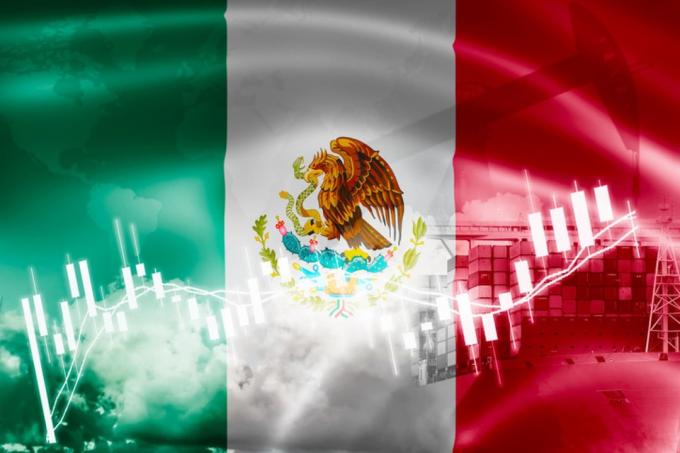The economic development of Mexico comprises a broad strength within the service sector. During the period between 2010 and 2018, the economic status of this country increased to 2.8%, despite this due to from the fall in oil in 2019 and the global crisis due to COVID-19 in 2020, its economy was affected significantly.
From there, the Mexican Government focused on the application of strategies that will allow it to strengthen its economic development, they put into practice various programs social and financial inclusion, promoting investment in private infrastructure in strategic sectors, increasing public investment and increasing the export.
Advertisements

In this article you will find:
Components of Mexico's economic development
Inside of the level of economic development of Mexico there are the following components:
Advertisements
Energy and natural resources
Natural resources are constitutionally owned by the public, which indicates that the energy sector is managed through the Government with unlimited levels of private investment, leading this country to be the fifth largest oil producer at the level world. Despite this, the export percentage is lower than in the 1980s.
The service sector is in second place among the largest in Latin America and tourism remains the third source of income measured in dollars, after the automotive industry, as it is the sixth country with the highest visits foreign.
Advertisements
The process of strengthening the financial sector has managed to evolve as well as the economic liberation of international markets. Thanks to a strict regulatory structure, the acquisition and operation of national institutions, and the presence of international institutions, the financial sector is stable.
Agricultural production
After the Mexican Revolution between 1910 and 1917, an agrarian reform was carried out which highlights the transfer and distribution of free land to the peasant sector. This reform assures them the possibility of subsistence, it led to the division of land and the limitation in financial investments, since communal lands cannot be used.
Advertisements
In order to increase production and quality of life, in 1992 this article was modified, in order to give way to the transfer of rights of ownership of communal lands to the peasantry sector, which allowed cultivation in the creation of large farms that are currently fully mechanized.
The industry
Consequently, from the high requirements of the North American continent within the automotive industry, Under the terms of NAFTA, a large number of auto parts industries have been formed in the country of Mexico.
Advertisements
The maquiladora industry is now the most knowledgeable industrial sector in this country and has acquired many benefits from NAFTA, since it obtained a higher real wage increase than the others industries.
Due to this, other sectors have benefited from free trade and the level of exports that come from non-border states have managed to increase in recent years.
Finance system
Consequently, the economic crisis of 1994, the monetary policy was renewed and the decision was made to maintain price stabilization to optimize the development of financial activity and growth labor. This resulted in the stable maintenance of the purchasing power of the peso by Banco de México.
The Bank determines an inflationary scope, to specify the monetary base that is needed to expand domestic credit. Similarly, it monitors indicators such as real and projected inflation, the exchange rate, changes in labor contracts, and changes in product prices.
Mexican economy and foreign trade
This country has an economy aligned with exports and a great commercial power, since it has proven to be the nation with the largest number of free trade agreements. In 2005, it became the exporting and importing country with the highest level in the world where it obtained an annual increase of 12%.
Its foreign trade is associated with North American trade, almost 90% in exports and 50% in imports, go to or come from Canada or the United States. However, NAFTA has failed to restore trade, while other trade agreements have increased their performance.
Current economic development of Mexico
In the last decades, the development of Mexico today It has managed to perform poorly at the level of development and reduce poverty when compared to other similar countries. Its economic system had an estimated increase of 2% per year between 1980 and 2018, which has limited progress in the approach to the high-income economy.
Beyond the massive consequences for human health and life, the COVID-19 pandemic caused an impact and great demand on the financial system at the business and labor level that caused the drop in US production, which is the main trading partner of Mexico.
It also caused limitations in both national and international supply processes due to measures to reduce contagion and economic interruption and prevention of the risk of investments. In this sense, this nation only expects significant economic contraction.
Strategy
The Alliance Framework with Mexico came into discussion at the beginning of 2020 by the Executive Directorate of the Grupo del World Bank, where a period of six years and the alignment of the government's national development plan were agreed.
The purpose of this plan is to remain relevant to the current context, which includes strategic and flexible adjustments to face current demand. The Alliance Framework focuses on the analysis of the Systematic Diagnosis of Mexico and allows the strategic practice of the authorities.
With a population of more than 120 million, a suitable geography, attractive and great diversity historical and unlimited variety of natural resources and the growth of a trade and institutions solid, the economic development of Mexico It is located among the first fifteen economies of greater global relevance and the second in Latin America.


